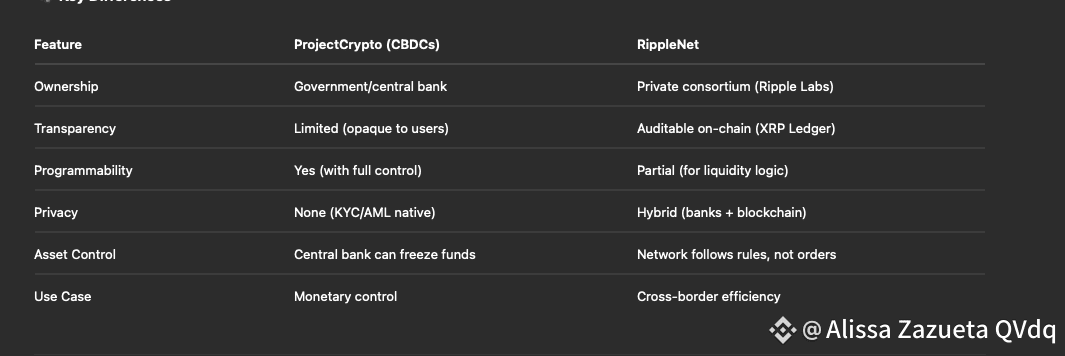As central banks accelerate ProjectCrypto initiatives — their own programmable, government-controlled digital currencies — another system is quietly growing alongside them: RippleNet, powered by XRP and corporate partnerships.
The battle is clear:
State-issued surveillance vs enterprise-grade interoperability.
🏛 ProjectCrypto: Central Bank Digital Currencies (CBDCs)
Governments are rolling out their own digital currencies to:
🧾 Enforce compliance
📍 Control how/where money is spent
📉 Phase out cash
👁 Enable full transaction traceability
⛔ Freeze or expire assets on command
It’s programmable money… with strings attached.
Example projects:
Digital Yuan (China)
Digital Euro (EU)
Digital Rupee (India)
Project Cedar, Hamilton (USA)
🌐 RippleNet: A Bridge, Not a Cage
RippleNet, by contrast, is focused on:
🔄 Instant cross-border payments
💸 On-Demand Liquidity (ODL) using XRP
🤝 Private + public integration (banks + blockchains)
🪙 Tokenization infrastructure for RWAs, CBDCs, stablecoins
🌍 Used in pilot projects by UAE, Palau, Bhutan, and others
Ripple isn’t anti-regulation — but it’s not total control. It’s a middleware layer — connecting fiat, crypto, and real assets without central banks owning the entire flow.
🧠 Key Differences

⚠️ Why It Matters
Governments want monetary surveillance infrastructure.
Ripple wants interoperability infrastructure.
If ProjectCrypto wins — privacy loses.
If RippleNet scales — some decentralization survives inside TradFi.
🧠 Final Take
We’re watching the emergence of competing digital money stacks:
One centralized by law
One neutral by design
RippleNet might not be fully decentralized — but compared to CBDCs, it’s the open web.
💬 What’s your view:
Is Ripple a bridge to a better financial system — or a stepping stone toward total control?